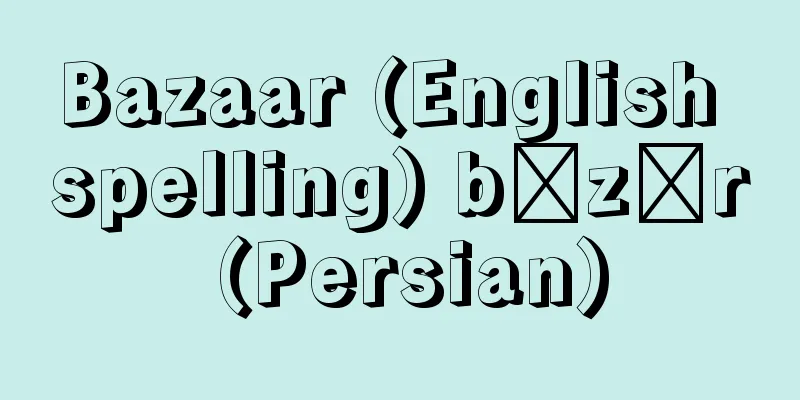Pestle - Kine

|
A tool used in threshing and polishing grains, milling flour, and pounding mochi (rice cakes), paired with a mortar. It is also used to pound boiled soybeans when making miso. The archaic word for pestle was ki, which later came to be called kigī, kige, kino, kine, tekigi, etc. Structurally, they can be broadly divided into vertical pestles and horizontal pestles, and are used by arm strength, leg strength, water power, etc. Wooden pestles are common, but stone pestles are sometimes used with stone mortars. A vertical pestle is made by carving the middle of a log so that it is thick enough to hold in the hand, and this part is held and moved up and down to pound the contents of the mortar. This type of pestle is depicted on bronze bells and has been excavated from the Karako ruins in Nara Prefecture and the Toro ruins in Shizuoka Prefecture, and is therefore older than the horizontal pestle. The vertical pestle was later replaced by the horizontal pestle and became less used, but until recently, the round vertical pestle was used for pounding miso beans, pounding roasted rice, and for the initial stage of pounding mochi. The pestles used in waterwheels that use water power are also vertical pestles in terms of structure. A horizontal pestle has a horizontal bar (handle) attached at almost a right angle to the pestle. There are two types: one that is held by the hand with the handle, and one that is used with a mortar (a mortar) that moves the pestle up and down by stepping on the horizontal bar with the foot. The former is generally referred to as the horizontal pestle, but there are two types: one with a flat tip for pounding mochi and one with a concave tip for polishing. When polishing with a horizontal pestle, a ring of straw slightly larger than the pestle is sometimes placed inside the mortar to allow the grains to circulate. The pestle, like the mortar, also has a magical meaning, and there are folk customs in which the pestle is likened to a man and the mortar to a woman. For example, there is a folk custom in which a bride straddles a pestle at the entrance to her husband's house. [Naoyuki Ogawa] [Reference] |©Mitsuyoshi Tashiro "> Types of pestle ©Mitsuyoshi Tashiro "> Types of mortars and how to use them Source: Shogakukan Encyclopedia Nipponica About Encyclopedia Nipponica Information | Legend |
|
臼(うす)と対(つい)になって穀物の脱穀、精白、製粉や餅搗(もちつ)きに使う道具。みそをつくるときに煮た大豆を搗きつぶすのにも使う。杵の古語はキで、のちにキギ、キゲ、キノ、キネ、テキギなどとよぶようになった。構造的には竪杵(たてぎね)と横杵に大別でき、その使用には腕力によるもの、脚力によるもの、水力によるものなどがある。木の杵が一般的であるが、石の臼には石の杵が使われる場合もある。竪杵というのは、丸太の中ほどを手で握れるくらいの太さに削り、ここを持って上下に動かして臼の中のものを搗く。この型の杵は銅鐸(どうたく)に描かれたり、奈良県唐古(からこ)遺跡、静岡県登呂(とろ)遺跡からも出土しており、横杵より古いものである。竪杵は、のちに横杵にかわり、使用が少なくなったが、みそ豆搗きや焼米(やきごめ)搗き、餅の搗き始めには、最近まで丸棒状の竪杵が使われた。水力を利用する水車の杵も構造的には竪杵である。横杵というのは、杵にほぼ直角に横木(柄(え))をつけたもので、手で柄を持って使うものと、踏臼(ふみうす)(唐臼(からうす))といって足で横木を踏んで杵を上下させるものがある。横杵といえば一般的には前者をさすが、これには杵の先端が平らな餅搗き用のものと、凹形になった精白用のものがある。横杵による精白には、穀粒が循環するように、杵よりやや大きめの藁(わら)製の輪を臼の中へ入れることもある。 杵は臼とともに呪(じゅ)的な意味ももち、杵を男性、臼を女性に見立てた民俗がある。たとえば花嫁が婚家に入るときに、門口で杵をまたぐなどの民俗がある。 [小川直之] [参照項目] |©田代三善"> 杵の種類 ©田代三善"> 搗臼の種類と使い方 出典 小学館 日本大百科全書(ニッポニカ)日本大百科全書(ニッポニカ)について 情報 | 凡例 |
Recommend
Asteroseca Okafujii - Asteroseca Okafujii
...Fossils of various horsetails, ferns (especial...
Paulownia Tree Alley - Paulownia Tree Alley
...In the early days of Mulan, the writers involv...
Acid calcium carbonate
…The chemical formula is Ca(HCO 3 ) 2 . It is als...
Nyamwezi
…He was a chief who united the Nyamwezi people wh...
Spal'vin, EG (English spelling)
…Until the beginning of the 20th century, Japanes...
Undercoat middle part - undercoat
This was a method of settling disputes over taxes...
standing committee
...In addition, because party discipline is weak ...
Lycopodium sieboldii (English spelling) Lycopodium sieboldii
…[Masahiro Kato]. . . *Some of the terminology th...
Wallace Line - Wallace Center
The boundary line of biological distribution that ...
England - Ingurando (English spelling) England
It is one of the United Kingdoms that make up the...
Non-commissioned officer - Kashi
A low-ranking officer. See the entry for "shi...
Iitaka Station
A roadside station in Matsusaka City, Mie Prefectu...
Malt - Bakuga (English spelling) malt
Germinated barley seeds. Not only is it an importa...
Greek Orthodox Church; Eastern Orthodoxy
Officially, it is called the "Orthodox Cathol...
Battle of Yashima
The Genpei War took place on February 19, 1185, at...







![Miho [village] - Miho](/upload/images/67ccf58999f81.webp)
![Augustus [II] - Augustus](/upload/images/67cacf96878ec.webp)
